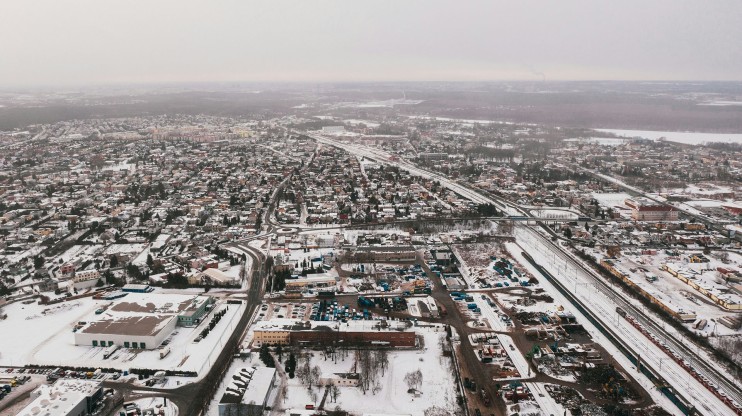Have Questions? We’re Here to Help!
Discover more about improving facility performance while reducing costs.

From increasing resilience through extreme winter weather to maintaining reliability in outage-prone areas, today’s leading sustainability strategies help facilities not only improve their carbon footprint — but stay ahead through wintry climate impacts, too.
Following, we’ll explore two sides of the sustainability coin: 1) How to keep existing investments performing well through winter months, and 2) Why decarbonization tactics can also make your facility operations more resilient through some of the unique challenges posed by winter.
Like any facility component, it’s important to batten down the proverbial hatches to protect sustainability program elements like solar panels and building systems from the harsh elements of winter.
01
Rooftop solar. Take measures to protect panels from winter storms. If your facility is located in a wintry area, it’s likely your solar photovoltaic (PV) array was designed to handle snowy conditions and may, for example, have snow retention guards in place. Still, it’s always good to double-check if the roof itself is ready for winter before snow starts to fall.
Note: Solar actually does really well in the winter for a variety of reasons. For one, PV systems often perform with better efficiency at colder temperatures. Plus, when snow is on the ground, you also benefit from high ground-reflected radiation.
02
EV charging. Confirm EV charging stations are up, running, and fine-tuned for winter charging, whether it’s to support your employees/customers or fleet of trucks. After all, some makes and models of EVs may have reduced range in the winter, so it’s an especially meaningful time to deliver access to consistent charging.
Pro tip: If you do offer parking lot EV charging and/or curbside, make sure snowplow operators are prepared accordingly and will plow around the pedestals to assure EV drivers’ can access them. This operational “detail” can be easy to overlook but could be invaluable to the people and processes dependent on reliable charging.
03
Building systems including heating, ventilation, air conditioning (HVAC). Dot your i’s and perform your maintenance checks, tuneups, and replacements as needed to protect essential building systems and ensure they’re primed to run as efficiently as possible.
Bonus points: In colder winter months, your facility will probably burn more natural gas for building heat — in turn driving Scope 1 emissions. So sustainability measures like proactive HVAC maintenance and efficiency improvements to the building envelope can also reduce Scope 1 emissions related to facility heating.
Sustainability strategies can make your facilities more resilient to winter conditions in a few key ways.
Winterizing your facilities is itself a sustainability strategy. Safeguarding facility improvements, keeping the heat inside, maximizing energy use — these and more sustainability-related efforts can go a long way in reducing your company’s energy spend and carbon footprint through winter.
But the reverse is true too. By investing in sustainability strategies, you can help protect facilities from the varying impacts of a harsh winter. Contact a Mantis pro today to discuss how our sustainability solutions will help you drive business resilience, cost savings, and carbon reductions alike — in winter and all year round.
Discover more about improving facility performance while reducing costs.